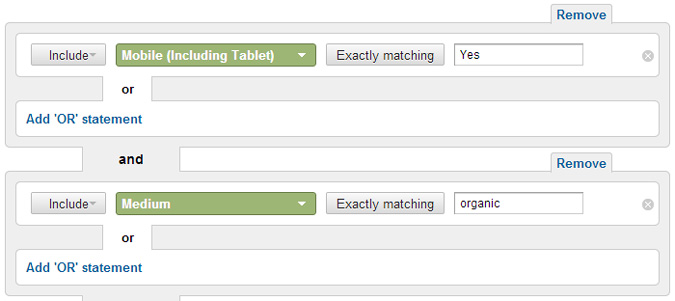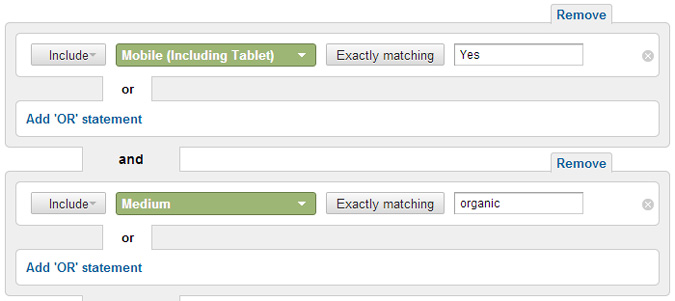Aaron Charlie
5 Jun 2013
4 Google Analytics Tips for Mobile SEO
 Every new statistic confirms that Mobile search is on the rise, overtaking desktop search in some locations and niches. If you're not already looking into mobile search then you should be, especially as mobile search intent is usually very different to desktop intent - and this has strong implications for your search strategy.
Every new statistic confirms that Mobile search is on the rise, overtaking desktop search in some locations and niches. If you're not already looking into mobile search then you should be, especially as mobile search intent is usually very different to desktop intent - and this has strong implications for your search strategy.
Use the tips in this post to dive into your mobile search analytics to discover your existing mobile search traffic and begin to look for new opportunities moving forward. If you need help with SEO or Google Analtyics then take a look at our SEO courses which include Google Analytics training.
1/ Are Your Visitors Using Mobile Search?
The very first thing you should do is check what percentage of your visitors are using mobile, this should give you an indication of how much time you should put aside for mobile. However, don't forget that mobile is still on an upwards trend so your niche might be just about to explode onto mobile. You might also be providing a horrible mobile experience which will make returning visitors unlikely.
We set up a Mobile Search filter that allows us to dig into our data and find out more about our mobile searchers. Click the link to add the filter to your profile or set a new filter up as below. This Advanced Segment is your go-to for any mobile search related data.

2/ Local Search Results
This tip works best for businesses with a physical location. Head to your Keyword report in Traffic Sources > Sources > Search > Organic and apply the Mobile Search Filter. If you have a physical location then you may start to see some location specific searches such as "keyword + nearby".
If you have multiple locations, find out which are being searched for the most using a combination of the Location data but also looking for searches that contain locations e.g. "keyword+ Brighton". It's best to use a combination of the two approaches because Google warn that "City location may not be accurate for visits from mobile devices."
Once you have an idea of your most popular areas you can then define new filters than include mobile search traffic from a particular location - this allows you to get really granular with your analytics.
3/ Mobile Landing Pages
Especially important if you have a mobile optimised site, establishing your most popular landing pages for mobile searches gives you the opportunity to optimise these pages for a mobile audience.
It's likely that your top mobile landing pages are different to your top desktop landing pages, so look at which pages are more popular on mobile than desktop - why are they receiving the most traffic? It may be that they're optimised for a mobile specific query or are location based.
4/ Device Segmentation
If you're looking to expand your mobile targeted content then establish which platforms are most popular - smartphone vs. tablet and most popular operating systems are good places to start.
For example, 67% of our mobile traffic (including tablets) comes from people using iOS. If we had the budget to create a mobile app for only one platform, this tells us that iOS would be the way to go! It also gives us an indication that iOS app round up posts are going to be more popular than Android round up posts.
These stats also tell you which areas to work on - why are Android users less frequent? This may be due to the default search engine on each device, or that demographics differ across platforms.
Hopefully these tips have given you a place to start when using Google Analytics to improve your mobile SEO. I've barely scratched the surface of what you can do but I'll leave that to our Advanced Google Analytics course!
Let us know if you find anything surprising in your mobile analytics by leaving a comment below.

